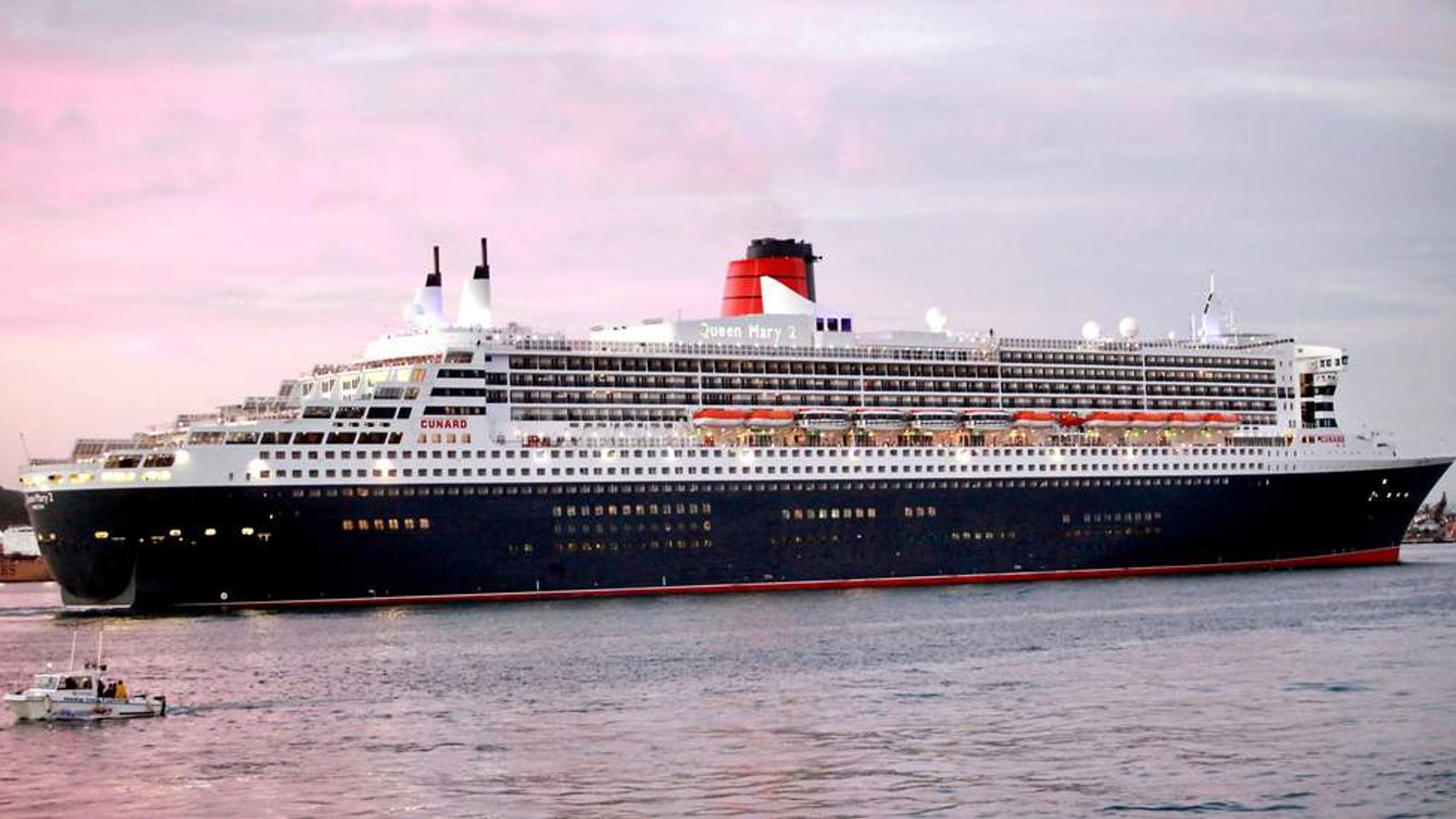Table Of Content

In 2013, the number of reported illness outbreaks on cruise ships was 22. The total number of infected was 2385 (of those 2249 passengers and 136 crew). In 2014, the number of reported illness outbreaks on cruise ships was 17. The total number of infected was 3559 (of those 3354 passengers and 205 crew). In 2015, the number of reported illness outbreaks on cruise ships was 23. The total number of infected was 2570 (of those 2458 passengers and 112 crew).
Cruise Etiquette: How to Not Get Sick on a Cruise - Condé Nast Traveler
Cruise Etiquette: How to Not Get Sick on a Cruise.
Posted: Tue, 19 Mar 2024 07:00:00 GMT [source]
Cruise Ship Norovirus Statistics & How To Avoid Sickness 2024
In the following table, you can see all 2019-reported Norovirus outbreaks on cruise ships. It shows the number of sick passengers and crew (with the respective percentage to all), along with the corresponding CDC report pages (if available) as outgoing links. The Vessel Sanitation Program (VSP) requires cruise ships to log and report the number of passengers and crew who say they have symptoms of gastrointestinal illness.
Report It

Often called "stomach flu" (the med term is "Gastroenteritis") the infection results in massive vomiting and diarrhea. Sickness outbreaks are considered as such if the percentage of infected people is over 3%. The virus is not seasonal and usually not serious (in medical terms). It hits 1 in 5 people annually and is the cause of ~50% of all foodborne illness outbreaks in the USA and for ~90% of all non-bacterial gastroenteritis worldwide. Thirteen ships so far this year have reported outbreaks of the highly contagious stomach bug, the most since 2012, according to the U.S.
Popular Searches
These models helped visualize continued norovirus transmission and sources of potential exposure (e.g., contaminated surfaces in cabins of persons with AGE and high-touch surfaces in common areas). Most recently, a norovirus outbreak in June on the Viking Neptune sickened 110 passengers (over 13% of the ship's guests) and nine crew members with vomiting, diarrhea and abdominal cramps, according to the CDC. The CDC has tracked outbreaks of gastrointestinal illness on cruise ships through its Vessel Sanitation Program (VSP) since 1994. There are more than 21 million US cases reported annually, of which 1 mill related to kids. Outbreaks happen mostly during winter months and mainly in more crowded places with close quarters.
When was the most recent norovirus outbreak on a cruise ship?
Norovirus is a highly contagious virus that causes acute gastroenteritis, which is inflammation in the stomach or intestines, according to the CDC. Health officials say norovirus is the most common cause of vomiting and diarrhea as well as the most common type of foodborne illness. The Centers for Disease Control and Prevention is reporting the highest number of norovirus outbreaks in over a decade and it is impacting hundreds of passengers and crew members onboard some of the most prominent cruise lines.
Norovirus outbreaks surging on cruise ships this year - CBS News
Norovirus outbreaks surging on cruise ships this year.
Posted: Wed, 12 Jul 2023 07:00:00 GMT [source]
First and foremost, wash your hands often with hot water and soap; the CDC recommends hitting the sink before and after eating and smoking, after touching your face, after using the restroom, and whenever your hands are dirty. Limit person-to-person contact as much as possible (we're not saying you absolutely must refuse the captain a handshake at his cocktail party ... just use your judgment throughout the cruise). Norovirus is named after an outbreak that occurred in Norwalk, Ohio, in the late 1960s.
This is a neurodevelopmental disorder - babies are born with an underdeveloped head. Zika virus (aka ZIKV) is a Flavivirus - from the genus of the viruses named West Nile, dengue, tick-borne encephalitis, yellow fever. These plus several other viruses may cause encephalitis (acute brain inflammation). In humans, Zika virus causes the Zika fever which is known to occur only within some equatorial regions. In 2014, Zika spread across the Pacific Ocean to French Polynesia, and soon to Easter Island.
How common is norovirus on cruise ships? Here’s why you shouldn’t worry
Symptoms may include diarrhea and vomiting, as well as abdominal cramping, headaches, muscle aches and fever — an unpleasant experience any time but especially when you're on vacation. The CDC's tally of norovirus outbreaks so far confirmed on cruise ships in 2023 is already higher than any annual outbreak tallies since 2012, when the health agency recorded 16 outbreaks. In May, two outbreaks were reported on voyages led by Celebrity Cruises and Holland America. In March, Celebrity Cruises reported two norovirus outbreaks, as did Royal Caribbean International and Princess Cruises. Princess Cruises reported its first outbreak of the year in February, and Royal Caribbean International reported two the previous month. P&O Cruises also reported an outbreak on its Arcadia cruise ship this year.
Though Norovirus can be passed via contaminated food and water, when it comes to cruise ships it is typically spread through physical contact with ill people or surfaces/objects they may have touched. This includes shaking hands, caring for a sick friend or family member, sharing food or eating from the same utensils, and not washing hands after using the bathroom or changing diapers (the highly transmittable fecal-oral spread). Norovirus is highly contagious and spreads when you touch a contaminated surface and then put your fingers in or near your mouth, such as when eating without washing your hands. It's also frequently spread through contaminated food, sometimes earning it the nickname "food poisoning," even though there are many pathogens that can cause foodborne illnesses.
As of 2018, hospital ships have Brazil (6), China (5), Russia (6), USA (2), Spain (2), and India-Indonesia-Peru-Vietnam (x1). Hospital ships are designated as floating medical facilities (hospitals). Generally, Zika is a mosquito-borne virus spread by Aedes aegypti (aka "yellow fever mosquito") and Aedes albopictus (aka "Asian tiger mosquito"). However, it became "cruise virus" since the decease can also result from intrauterine (contraceptive device), sexual intercourse, blood transfusion, lab exposure, organ/tissue transplantation, breast milk transmission.
Additionally, be sure to drink plenty of water, as dehydration is a common side-effect. If passengers report symptoms, they are typically quarantined to their cabins to prevent spreading the illness to others -- not an ideal situation, but necessary. On cruise ships, health officials are legally required to track any illnesses that occur, while this same reporting is not required on land. For this reason, the Centers for Disease Control and Prevention note that outbreaks are reported more frequently on sea than on land. The most recent norovirus outbreak was reported on the Viking Neptune cruise ship.
Exposure to less than 100 norovirus particles can make someone sick, and infected people typically shed billions of particles, according to the CDC. Norovirus can also get into food before, during or after preparation, and it's the top germ causing foodborne illness in the U.S., per the CDC. Virus particles can contaminate drinking water that isn't treated properly or pools when people poop in the water. Some people are at higher risk of developing severe norovirus symptoms — these include infants, the elderly, and people with compromised immune systems, Ostrosky noted.
Clinic's size usually depends on the ship's capacity (passengers plus crew). Generally, bigger and newer ships offer larger and better-equipped medical facilities and are served by bigger infirmary staff. So it comes as no surprise that when CDC reports an illness outbreak on some vessel, big media sources do not immediately (or ever) respond to the news.

No comments:
Post a Comment